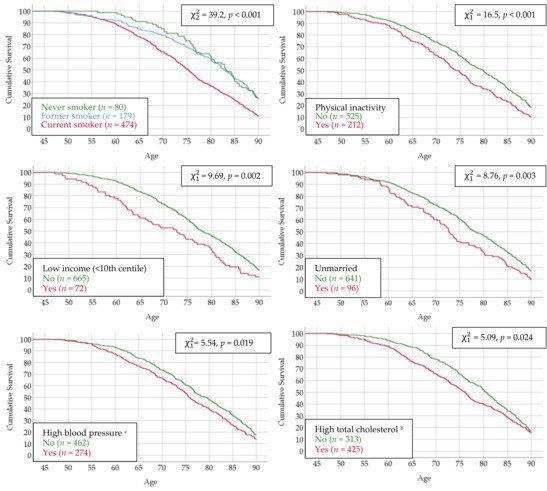Jun 19, 2019
Survival to Age 90 in Men: The Tromsø Study 1974–2018
Posted by Paul Battista in categories: biotech/medical, health
https://doi.org/10.3390/ijerph16112028 The aim of this study was to identify risk factors, individually and in combination, and their impact on reaching up to 90 years of age. The 738 oldest men who participated in the first survey of the population-based Tromsø Study (Tromsø 1) in Norway in 1974 have now had the chance to reach the age of 90 years. The men were also invited to subsequent surveys (Tromsø 2–7, 1979–2016) and have been followed up for all-cause deaths. This study sought to investigate what could be learned from how these men have fared. The men were born in 1925–1928 and similar health-related data from questionnaires, physical examination, and blood samples are available for all surveys. Survival curves over various variable strata were applied to evaluate the impact of individual risk factors and combinations of risk factors on all-cause deaths. At the end of 2018, 118 (16.0%) of the men had reached 90 years of age. Smoking in 1974 was the strongest single risk factor associated with survival, with observed percentages of men reaching 90 years being 26.3, 25.7, and 10.8 for never, former, and current smokers, respectively. Significant effects on survival were also found for physical inactivity, low income, being unmarried, high blood pressure, and high cholesterol. For men with 0–4 of these risk factors, the percentages reaching 90 years were 33.3, 24.9, 12.4, 14.4, and 1.5, respectively. Quitting smoking and increasing physical activity before 55 years of age improved survival significantly. Men should refrain from smoking and increase their physical activity, especially those with low income, those who are unmarried, and those with high blood pressure and high cholesterol. A limitation is that data on women not were collected; Quitting smoking and increasing physical activity before 55 years of age improved survival significantly.

















